このページを
日本語
で読む
From dawn to dusk, I was mesmerized by how the mountain transformed with the changing light. The sky’s shifting hues, drifting clouds, and their shadows danced across the calm, reflective lake below. I couldn’t take my eyes off it.
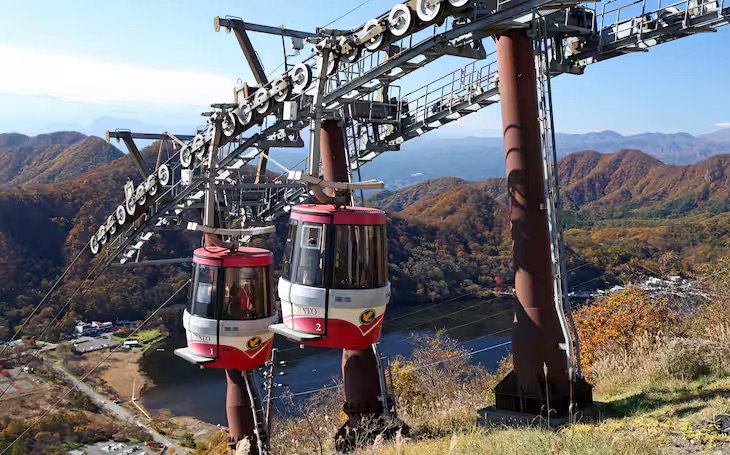 A three-minute ride on the ropeway from Haruna Kogen Station takes you to one of the famous peaks of Mount Haruna, with a view of Lake Haruna below. (©Sankei by Takumi Kamoshida)
A three-minute ride on the ropeway from Haruna Kogen Station takes you to one of the famous peaks of Mount Haruna, with a view of Lake Haruna below. (©Sankei by Takumi Kamoshida)
Gunma’s Mount Fuji
I was at Mount Haruna, located in Takasaki City, Gunma Prefecture. Locals cherish it as one of the “Three Mountains of Jomo” (the old name for Gunma), alongside Mount Akagi and Mount Myogi.
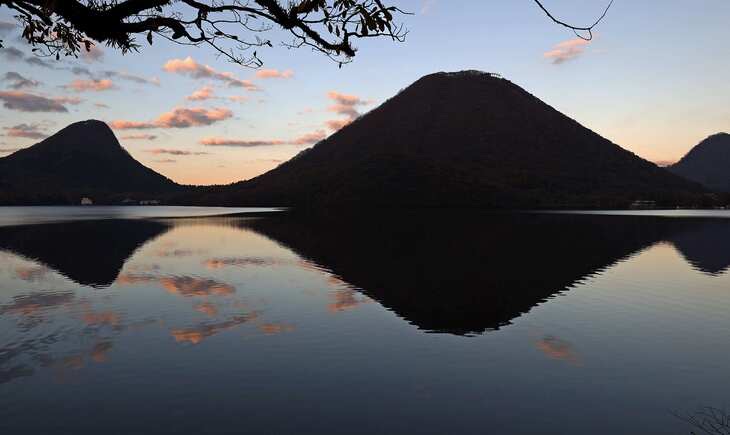 Lake Haruna and Mount Haruna at dusk. (©Sankei by Takumi Kamoshida)
Lake Haruna and Mount Haruna at dusk. (©Sankei by Takumi Kamoshida)
Interestingly, according to the city’s tourism association, there isn’t a single mountain called Haruna. Rather, it’s the collective name for a range centered on its highest peak, Kamongadake, which rises to 1,449 meters.
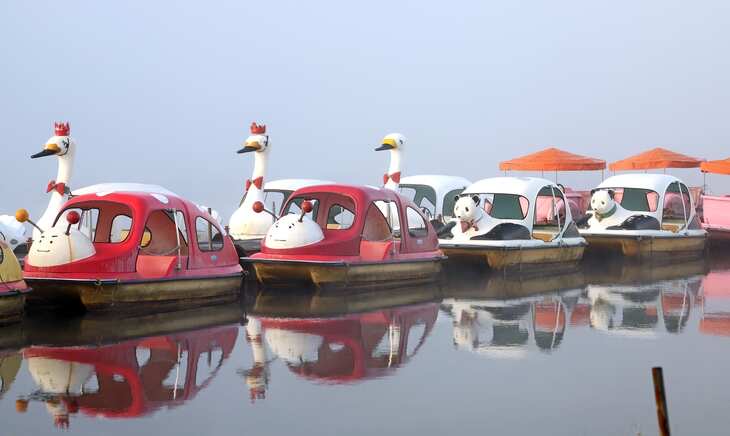 Swan boats floating on Lake Haruna in the early morning. (©Sankei by Takumi Kamoshida)
Swan boats floating on Lake Haruna in the early morning. (©Sankei by Takumi Kamoshida)
Within this range stands a peak known as “Haruna Fuji” for its resemblance to Mount Fuji. Rising 1,391 meters above sea level, it overlooks a 1.49 km² caldera lake. Nearby, Haruna Shrine attracts visitors seeking good fortune and abundant harvests, especially on weekends.
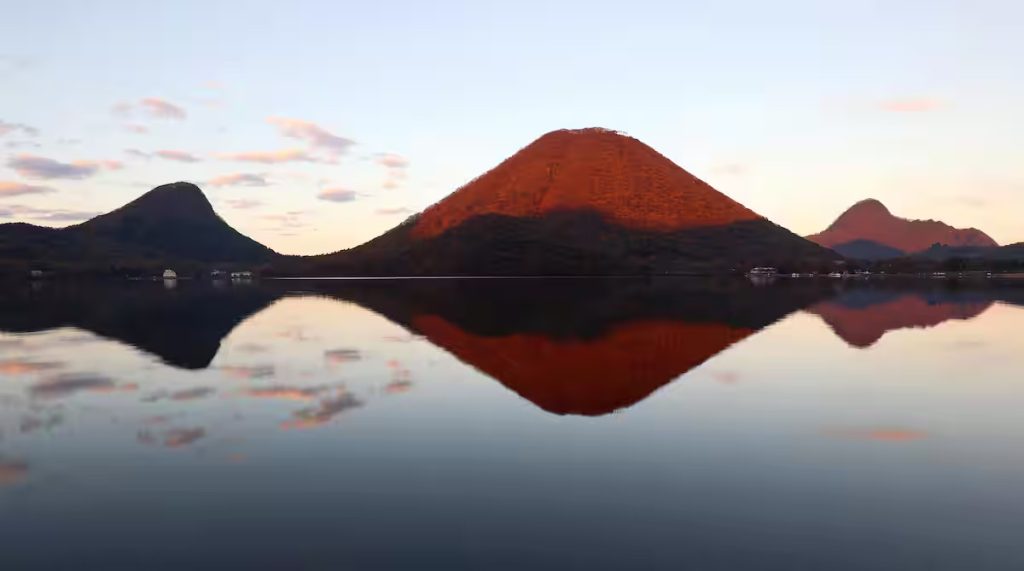 Mount Haruna’s autumn leaves glow even redder in the setting sun. November 8, 2024. (©Sankei by Takumi Kamoshida)
Mount Haruna’s autumn leaves glow even redder in the setting sun. November 8, 2024. (©Sankei by Takumi Kamoshida)
The Many Faces of Mount Haruna
“In the past, going to Haruna didn’t mean climbing the mountain — it meant visiting Haruna Shrine,” recalled the former head of the Haruna Town History Compilation Office. Even Lake Haruna, now beloved by anglers fishing for wakasagi smelt or black bass, was once off-limits.
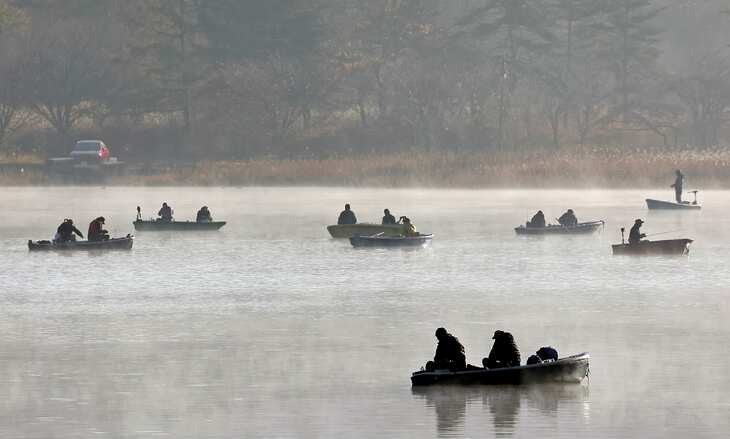 People fishing at Lake Haruna on November 4, 2024. (©Sankei by Takumi Kamoshida)
People fishing at Lake Haruna on November 4, 2024. (©Sankei by Takumi Kamoshida)
The area began attracting tourists more widely around 1924, when the mountains and lake were designated a prefectural park. It became a popular recreational spot for locals. By the Showa era, camping had become a craze. Rows of tents were so iconic that they were even celebrated in the local “Jomo Karuta” cards as the “Camping Village of Climbing Haruna.”
Mount Haruna in the autumn of 2024.
A visitor from Annaka City, Gunma, who has spent decades photographing the prefecture’s mountains, said, “The charm of this mountain is how it changes throughout the day.”
Indeed, Mount Haruna continues to enchant visitors across generations. Its beauty is constantly in flux, yet eternally captivating.
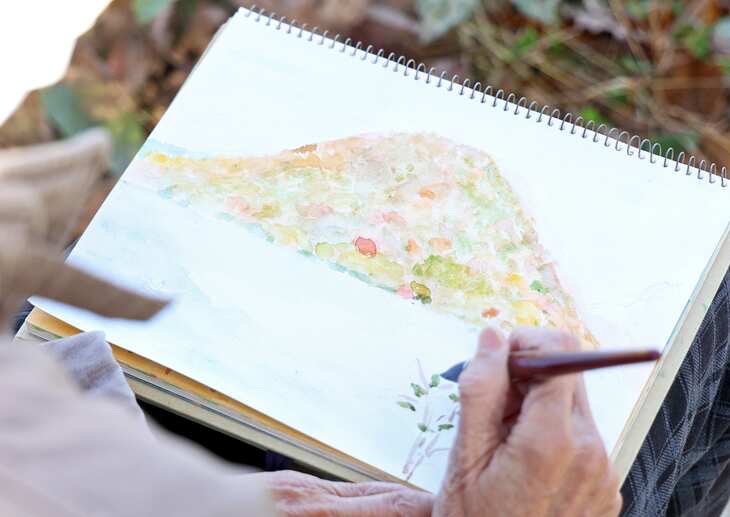 A resident of Takasaki City painting Haruna Fuji. “When I paint the mountain, memories of outings with my family come flooding back,” she shared. (©Sankei by Takumi Kamoshida)
A resident of Takasaki City painting Haruna Fuji. “When I paint the mountain, memories of outings with my family come flooding back,” she shared. (©Sankei by Takumi Kamoshida)
This article was first published in November 2024.
 RELATED:
RELATED:
Author: Takumi Kamoshida, The Sankei Shimbun
このページを
日本語
で読む
Continue Reading

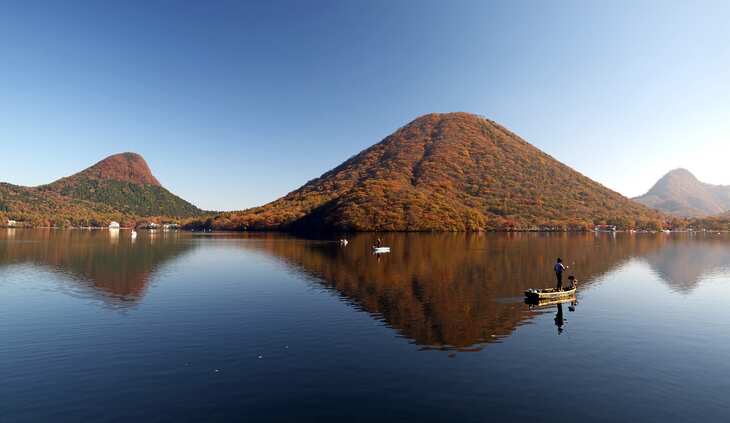
AloJapan.com